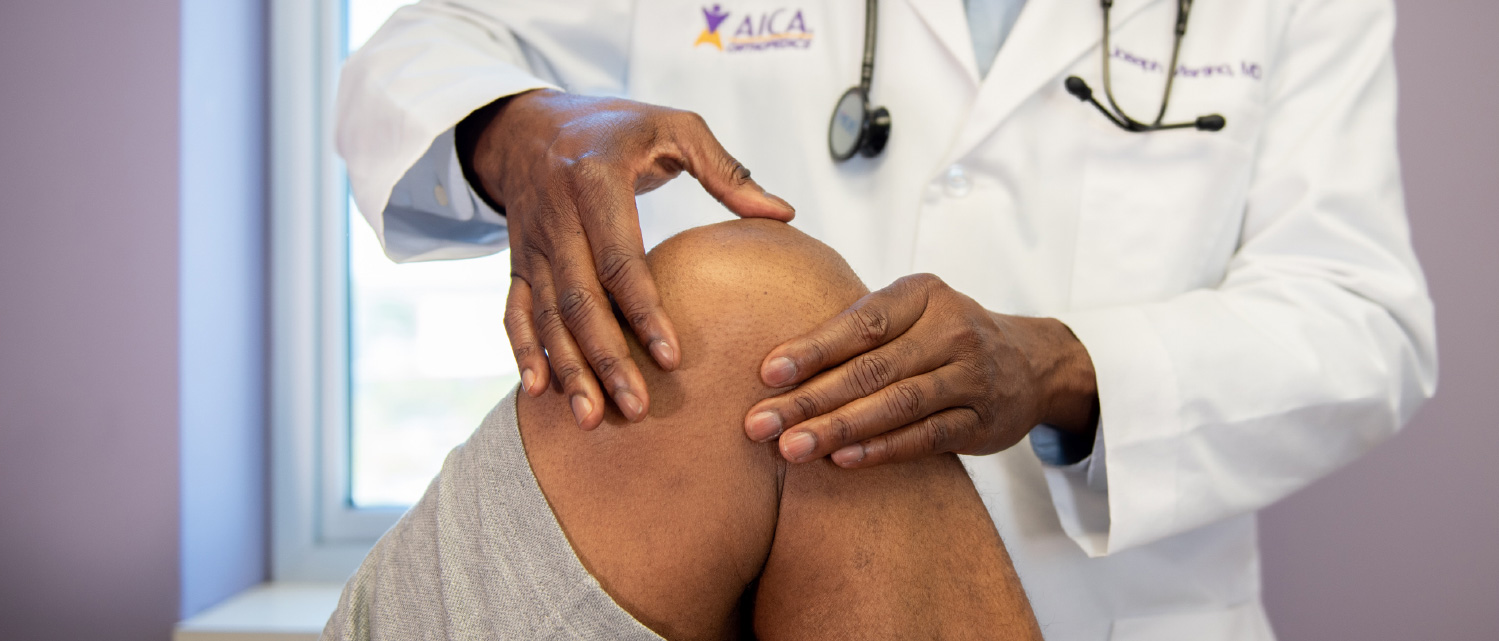
Partial Shoulder Dislocation
AICA Orthopedics
Partial Shoulder Dislocation
Shoulder dislocations tend to be a painful and inconvenient business. In general, a shoulder dislocation means that the arm bone has separated, either partially or completely from the shoulder socket. In the case of a partial shoulder dislocation, obviously the humerus is not entirely out of the scapula. The humerus (arm bone) rests in what is called the “glenoid fossa,” or the concave indentation in the scapula (shoulder bone). Partial shoulder dislocations are commonly referred to as subluxations, and they can happen to anyone. Fortunately, they aren’t uncommon and are typically very simple to treat.
Sin gastos de bolsillo
Transporte disponible
Médicos disponibles 24/7
Todas las imágenes internas
Cita el mismo día
Se aceptan la mayoría de los seguros
Se Habla Espańol
What Causes a Partial Shoulder Dislocation to Occur?
Partial shoulder dislocations often occur in one of three ways—as a result of a stroke, in the event of a traumatic incident, and/or in response to an injury. Strokes can tend to weaken the muscles and ligaments that help to keep the shoulder joint secure and stable. When this weakening occurs, the shoulder joint becomes more highly susceptible to suffering a partial shoulder dislocation. Anyone who has suffered a stroke should exercise caution in their physical activities since they have become more prone to dislocation as a result of their stroke. Trauma can cause dislocations like no other situation. Because the shoulder is the most often dislocated joint in the body, and the simplest way that these injuries occur is when the body is struck with an intense force, such as in the event of an accident related to cars or work, sporting related incidents, and even falls in the home or workplace. Existing injuries can cause, or more accurately, increase the likelihood that a partial shoulder dislocation will occur.
How Will You Know if You Have a Partially Dislocated Shoulder?
Symptoms of partial dislocations tend to be relatively similar to those of other types of shoulder dislocations. The individual with a suspected partial dislocation will likely experience pain in the shoulder joint and surrounding areas. They will typically notice a reduced range of motion in the shoulder, and accomplishing everyday tasks will be painful and sometimes impossible. It is also not at all uncommon for a noticeable deformity in the appearance of the shoulder joint to be present, which is obviously a strong indicator that something is awry. Surprisingly enough, in contrast to the pain many individuals feel when they have suffered a dislocation, others experience an almost numb sensation and have difficulty moving their shoulders without experiencing weakness in the muscles surrounding it. Dislocated joints also have a tendency to swell and even show signs of bruising, depending upon how the injury occurred.
How Are Partial Dislocations Treated?
Many physicians will opt to confirm a dislocation diagnosis with the use of a physical examination and an x-ray for good measure. This will help them to visualize the injury and make an informed conclusion as to the exact nature of the dislocated joint. Once a proper identification has been made, your doctor will determine whether or not they will be able to reset the dislocated arm with simple closed reduction and anesthetics, or if they will have to perform a more invasive open reduction through a surgical procedure.
How Will You Feel Post-Treatment?

Can Partial Shoulder Dislocations Become Recurring?
Since the shoulder joint is relatively unstable, it is unfortunately not unheard of for an initial shoulder dislocation to occur again after treatment. Unless the shoulder is properly set and exercised with prevention in mind, it is all too likely that the relative instability of the joint itself combined with a previous injury will cause the injury to be inflicted again at a later date. Physical therapists and chiropractors have the skills and expertise to help you maintain the health of your shoulder joint without compromising the flexibility that this particular joint needs to enjoy.











